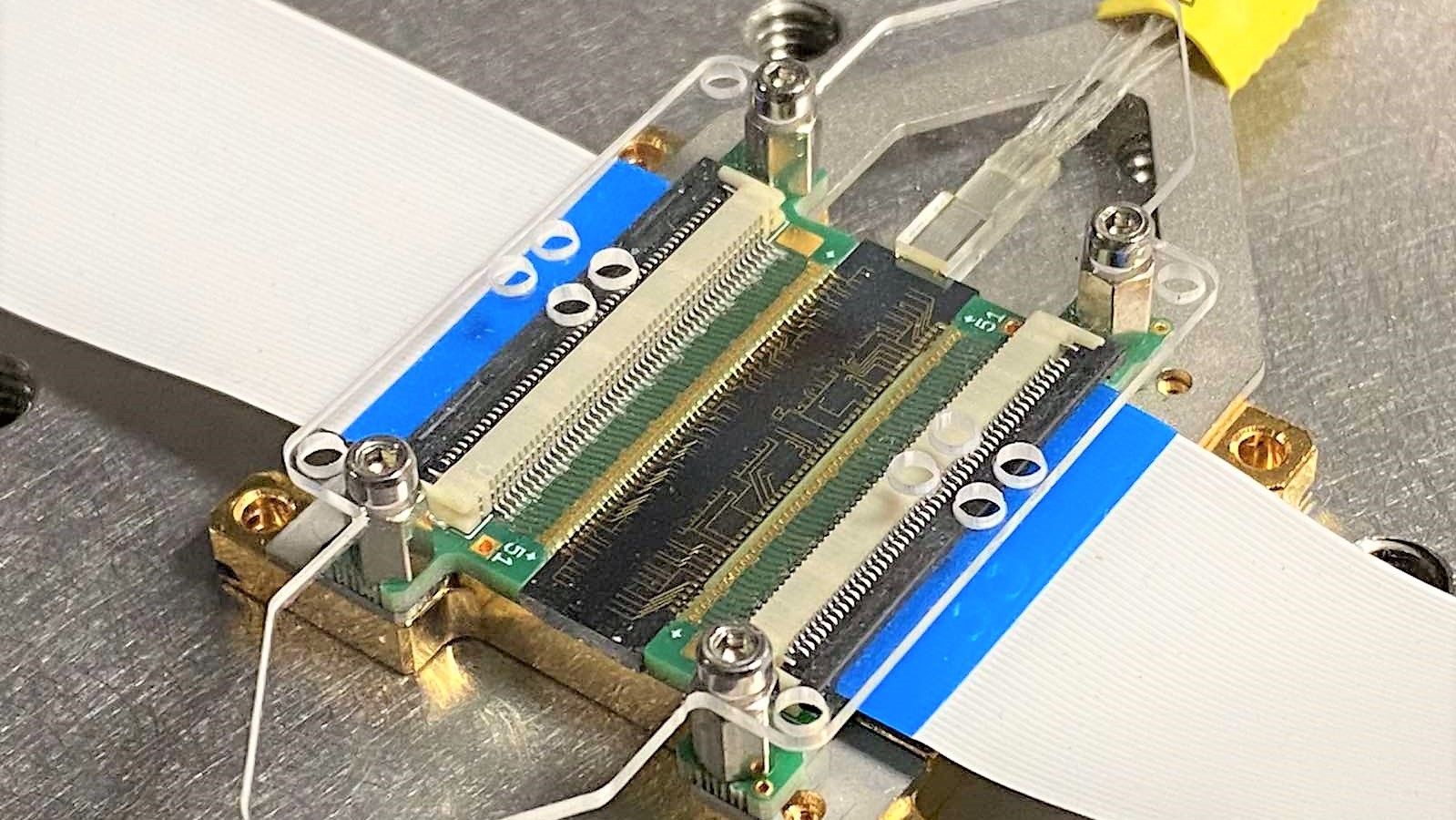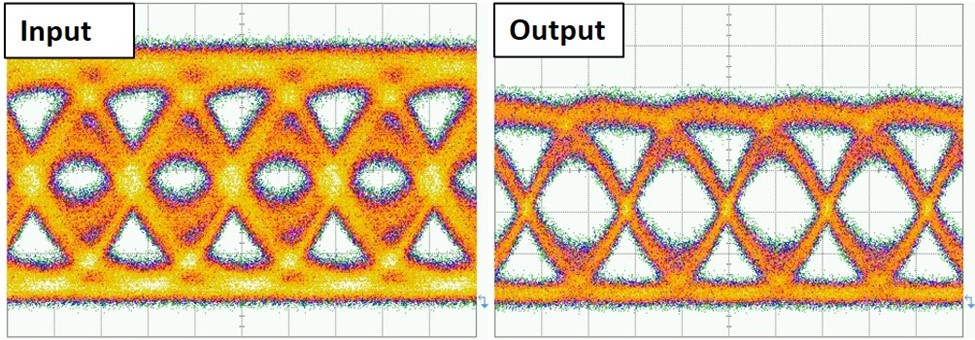Low error data transmission with an integrated photonic optical equalizer
Flexible, future-proof devices to support ultra-fast data-transmission in tele and data communications could be possible thanks to a novel optical equalizer designed by Athens-based start-up Optagon Photonics. The equalizer, fabricated by LioniX International, corrects distortions and data errors in communications signals and is the first such device to use photonic integrated technology to enable flexible operation across a range of data transmission speeds.
Figure 1. The photonic integrated optical equalizer chip fabricated by Lionix International, assembled into a module with electronic interfaces. Photo credit: K. Kouloumentas.
Tele and data communications rely on the transmission of data through with limited bandwidth. When broadband signals are generated inside and transmitted through such systems, distortions occur that bias the lower frequency parts of the signal. These low frequency parts of the signal can blur the boundaries between signal pulses, leading to problematic data errors.
A new era of equalization performance
Whilst equalizers using electronics are widely used to correct these signal distortions, inherent limits in electronics mean that these equalizers can only meet the needs of a rapidly developing communications industry for so long.
With a view to addressing this challenge and to demonstrate the feasibility of a new class of equalizers, Optagon Photonics worked with LioniX international to create an optical equalizer in a compact Photonic Integrated Circuit (or PIC). This PIC is the first optical equalizer to succeeded in directly mirroring the architecture and function of traditional electronic equalizers — something that was previously thought to be impossible. Not only this, but the reduction in data errors demonstrated by the device is very promising — tests showed data errors reduced to zero in all of the output signals evaluated1, no matter how distorted the input.
Figure 2. A representation of the input and output signals from the equalizer. The output signals have had the less sharply defined areas of the signal removed by the equalizer.
Low loss silicon nitride for high-performance equalization
Optagon Director Christos Kouloumentas highlighted the importance of low loss materials in enabling equalizer performance and stresses the value of LioniX International’s Silicon Nitride TriPleX platform. “Equalization is inherently lossy, as it involves removing parts of a signal to correct distortions. We wanted to be able to process a signal without the need for bulky optical amplifiers and so needed to carefully control losses. The value of LioniX’s TriPleX formulation is that it is possible to make low loss optical wave guides and to couple to external light sources, also with minimal losses.”
Photonic integration for flexible operation
Optical equalizers are not entirely new, though previous incarnations have either operated at a fixed transmission rate, or have offered flexible rate operation but sacrificed efficiency, cost-effectiveness or compactness to do so. In a major step forwards, the team at Optagon introduced tunable elements into the design of their PIC. The result is a compact equalizer that can be tuned in real-time to operate flexibly with a broad range of signal transmission rates.
There is real value in this flexibility. Data centre components may need to operate on different transmission rates and components may be upgraded to enable faster transmission rates as technology improves. This flexible PIC based approach to optical equalization therefore offers equipment manufacturers a one-size fits all add-on that can be deployed with a range of components. Furthermore, such a tunable device is future proof, with the scope to stay in use even as transmission rates increase over time.
Next steps using scalable fabrication processes
The current version of the PIC was fabricated as part of a cost-effective Multi Project Wafer (MPW) run, with a set of standardized components and production steps. Tests on this version of the equalizer have demonstrated proof of concept performance at modest transmission rates (or Baud rates – the number of signal pulses per second) of 5.8 GBaud. Optagon hope to demonstrate equalization at much higher rates, up to 100 Gbaud with their next generation of PICs by taking advantage of the non-standard process and materials available as part of a dedicated fabrication run at LioniX.
- C. Kouloumentas et al., “Multi-Rate and Multi-Channel Optical Equalizer Based on Photonic Integration,” in IEEE Photonics Technology Letters, vol. 32, no. 23, pp. 1465-1468, 1 Dec.1, 2020, doi: 10.1109/LPT.2020.3035506.
December 4, 2020, by Tom Horner




